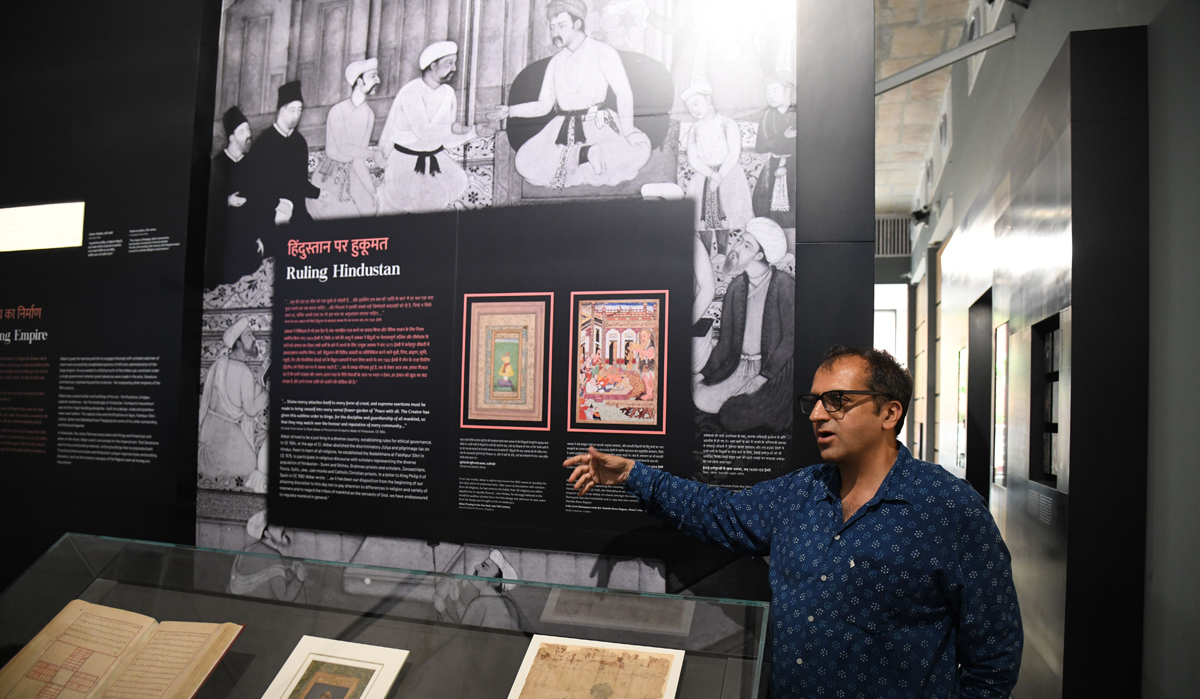The adventures of Marco Polo, the great traveller are very well known. But it is a little-known fact that Mughal emperor Humayun travelled three times more than Marco Polo, says Ratish Nanda, conservation architect and Projects Director of Aga Khan Trust for Culture, India. According to him, Humayun travelled 34,000 kms during his lifetime as a warrior, through present-day India, Pakistan, Afghanistan, and Iran.
Conservation efforts have brought up a museum celebrating the life of Humayun and other Mughals in Delhi’s Sunder Nursery.
The museum is a facility of the Archaeological Survey of India designed and built by the Aga Khan Trust for Culture at the culmination of 25 years of conservation effort at the 300-acre Humayun’s Tomb – Sunder Nursery – Nizamuddin Basti area of Delhi, wherein over 60 monuments have been conserved and the Sunder Nursery city park created as part of a single conservation and development project.
It is a UNESCO recommendation that Interpretation Centres/ Site museums be provided at the entrance zone of significant World Heritage Sites to provide visitors with the cultural context of the heritage site.
The museum building is designed to be underground so as to retain the views of the monuments. The building also serves as an underground bridge connecting the Humayun’s Tomb with the adjacent Sunder Nursery complex.
As one descends into the gallery blocks through stone ramps, 40-foot wide 3D illustrations and finely crafted architectural models highlight several World Heritage monuments built here along the river Yamuna.
The first principal gallery, ‘Where the Emperor Rests’, is focused on the architecture of Humayun’s Mausoleum and the personality of emperor Humayun – conveyed through stories of his travels, administration of his kingdom, his deep interest in reading, astrology and the arts as well as his patronage of architecture.
 Finishing touches done at the Humayun Museum | Sanjay Ahlawat
Finishing touches done at the Humayun Museum | Sanjay Ahlawat
Exhibits of the 14th century Sufi Saint Hazrat Nizamuddin Auliya, his disciple, poet Amir Khusrau Dehalvi – who created the Quwwali music genre, Rahim, and Dara Shukoh are also a part of the museum. Ratish Nanda says that the replicas of monuments and cravings on stones at the museum, are a modern marvel of intricate architecture.
The Humayun’s Tomb Museum has over 500 never-before-seen artefacts. The original golden finial or Kalash, 18 feet tall, that once crowned the dome of Humayun’s Tomb has been carefully repaired over several years by traditional coppersmiths and finds the pride of place in the museum.
The foundation stone of the museum was laid in April 2015. Towards building costs, an initial grant of Rs 49 crore was provided by the Ministry of Tourism, Government of India. The Aga Khan Trust for Culture has also provided significant funds.
The 1,00,000 square feet museum at Humayun’s mausoleum will be inaugurated on July 29 by the minister of tourism & culture, Gajendra Singh Shekhawat in the presence of Prince Rahim Aga Khan.
According to the management, the museum will lead to a significant increase in the time spent by visitors to the Humayun’s Tomb – Sunder Nursery World Heritage precinct. Over 3,00,000 schoolchildren attend the site annually. The Aga Khan Trust for Culture as Managing Trustee of the Government Sunder Nursery Management Trust will assist the ASI in the management of the Humayun’s Tomb World Heritage Site Museum for a period of 10 years from the date of opening.



